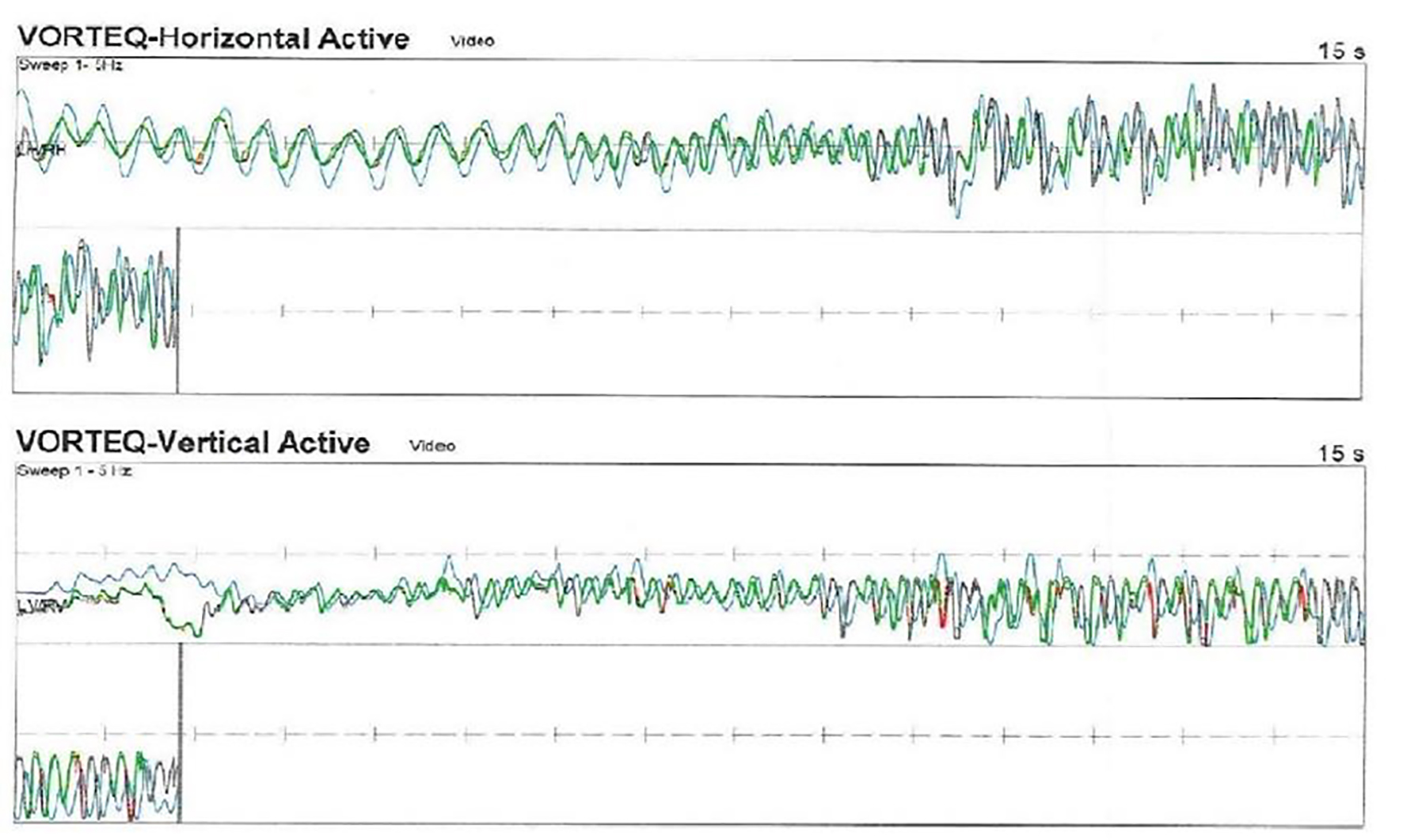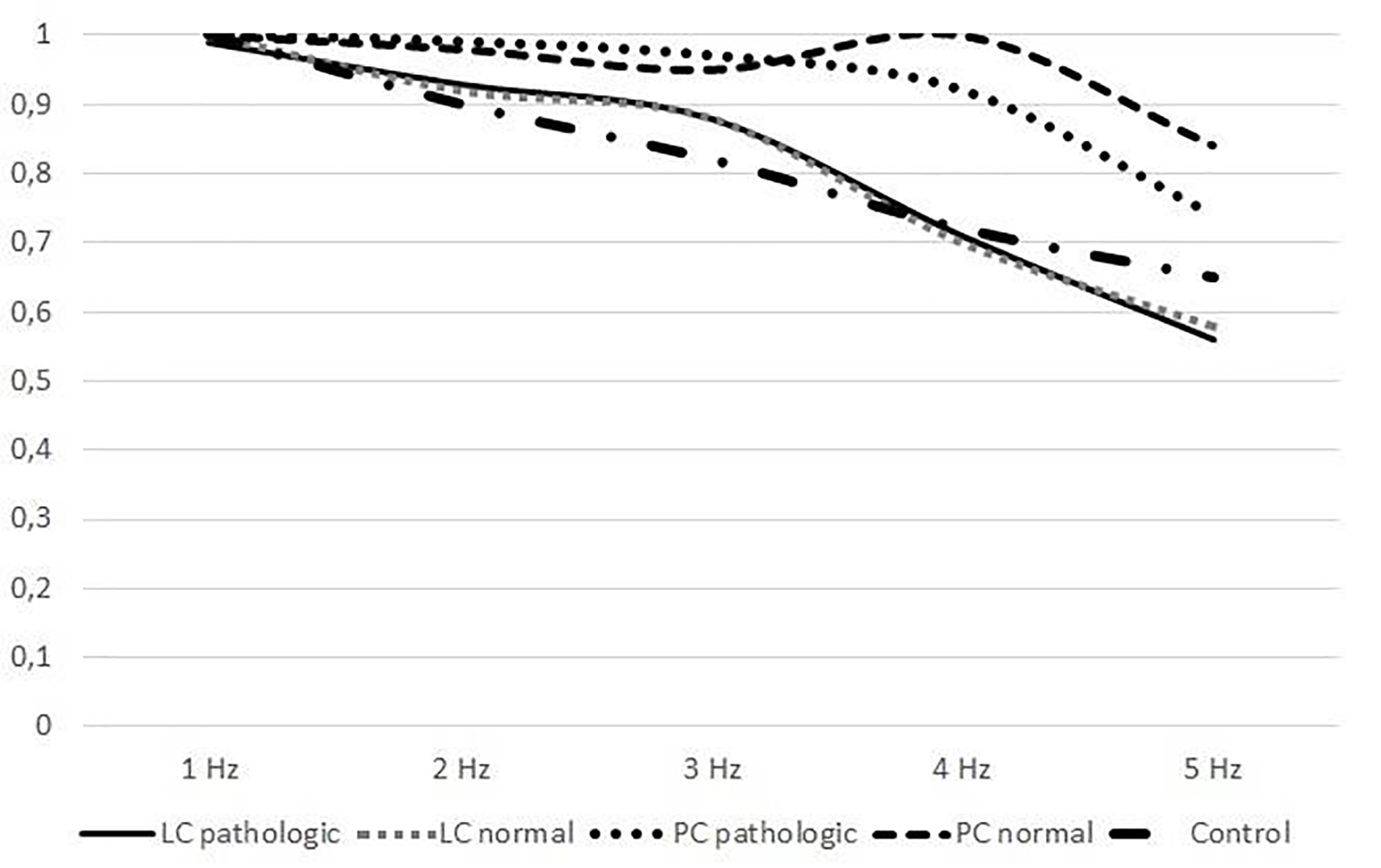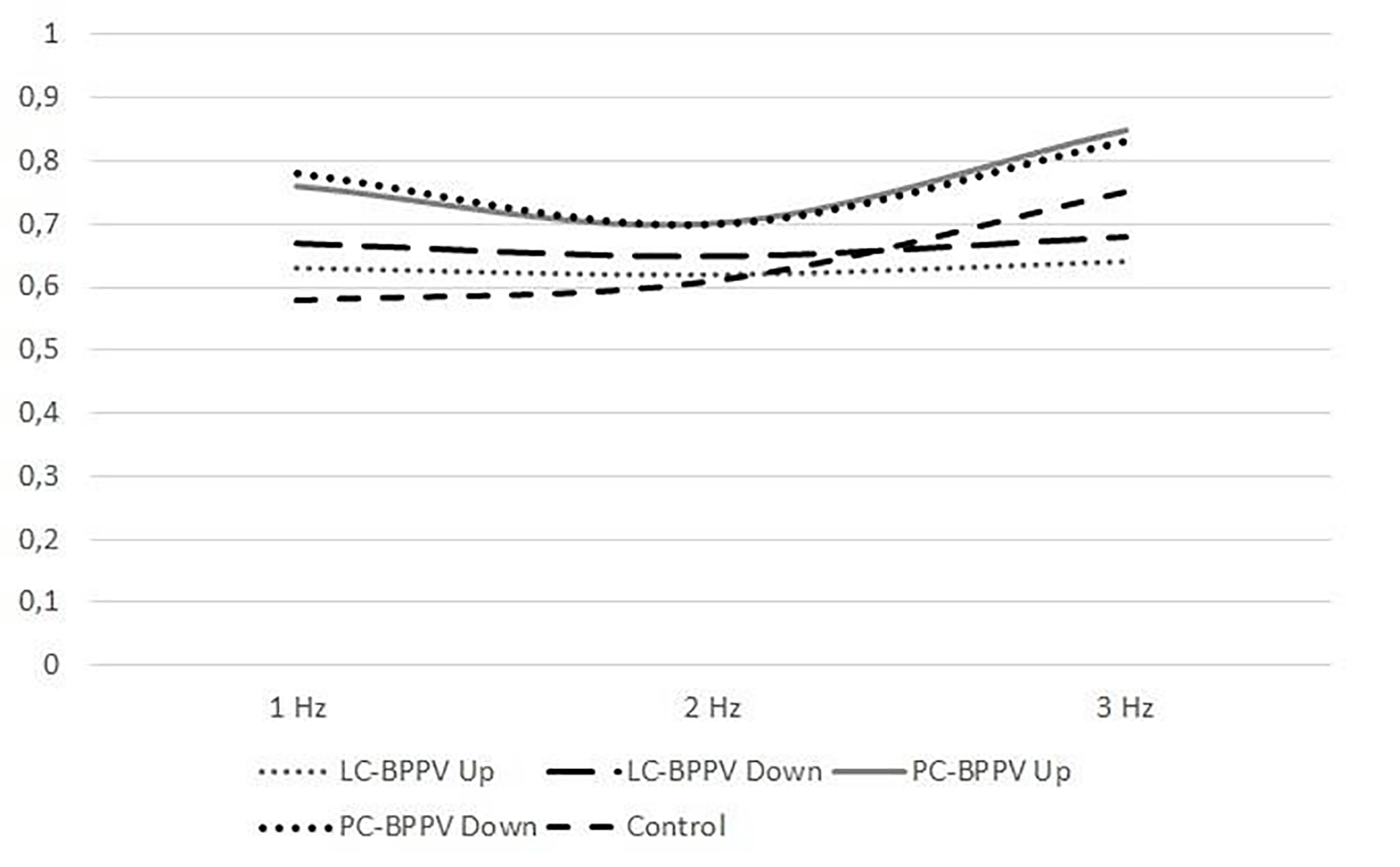
Figure 1. Active head auto-rotation recording of the patient with benign paroxysmal positional vertigo (BPPV). Head and eye recordings during horizontal head rotations are seen in upper drawing. Lower recording shows vertical head and eye movement (head rotations are dark, and eye movements are light color).

